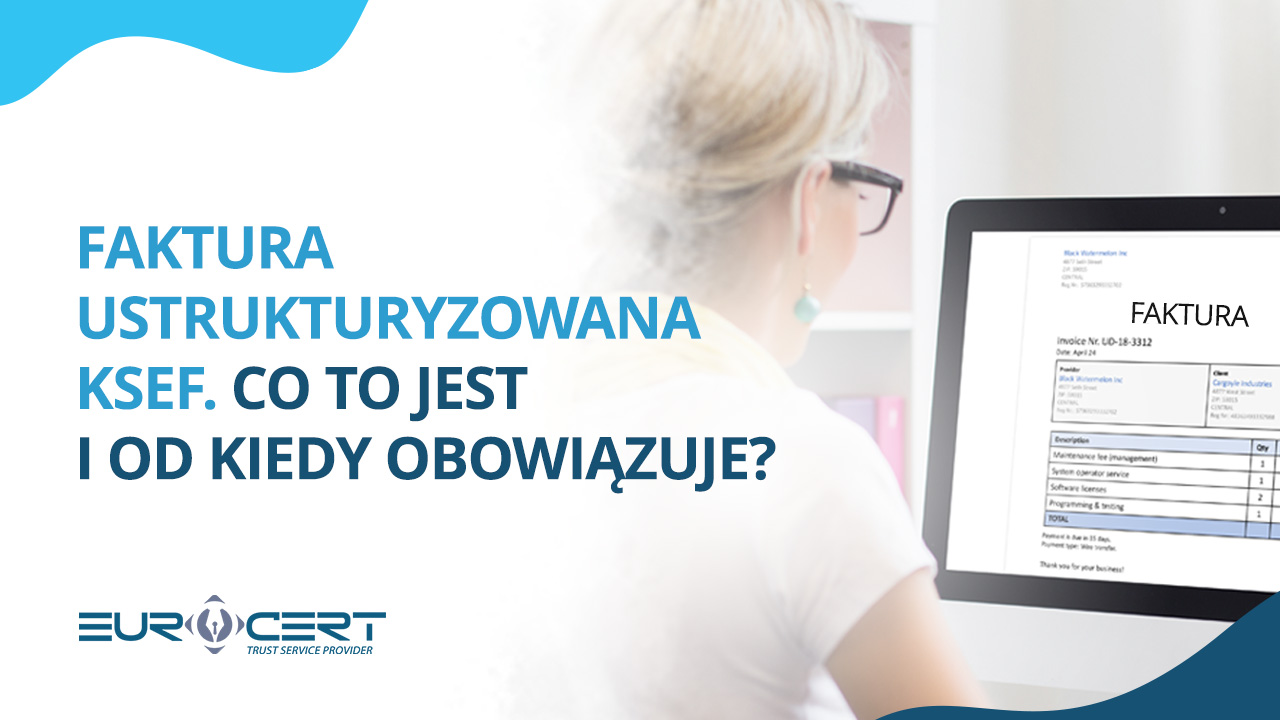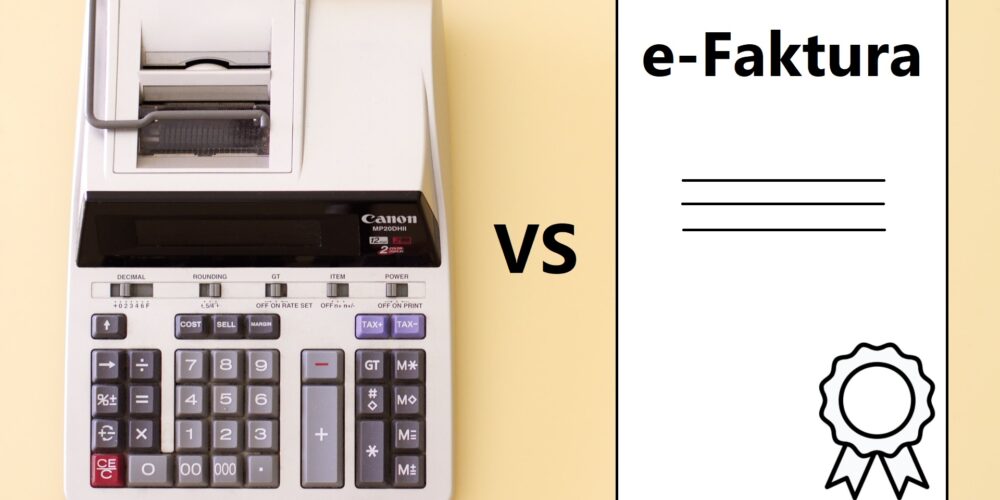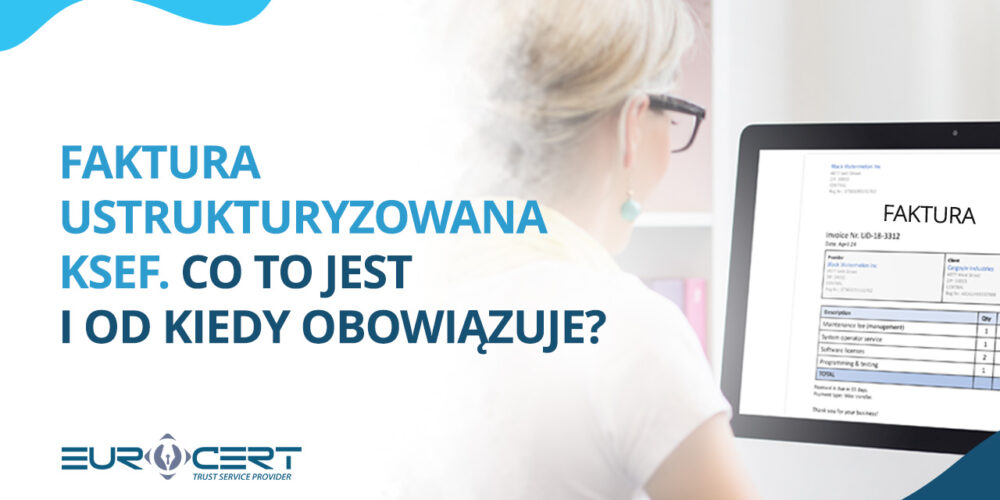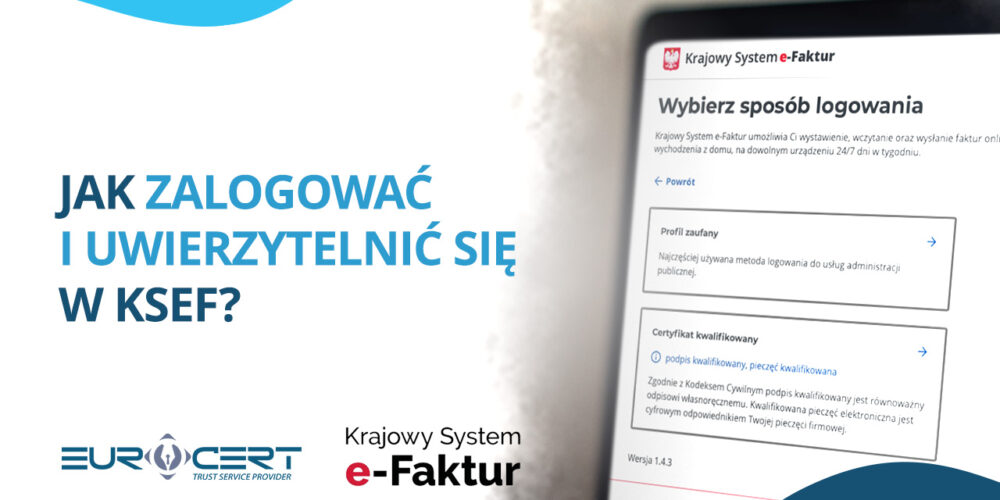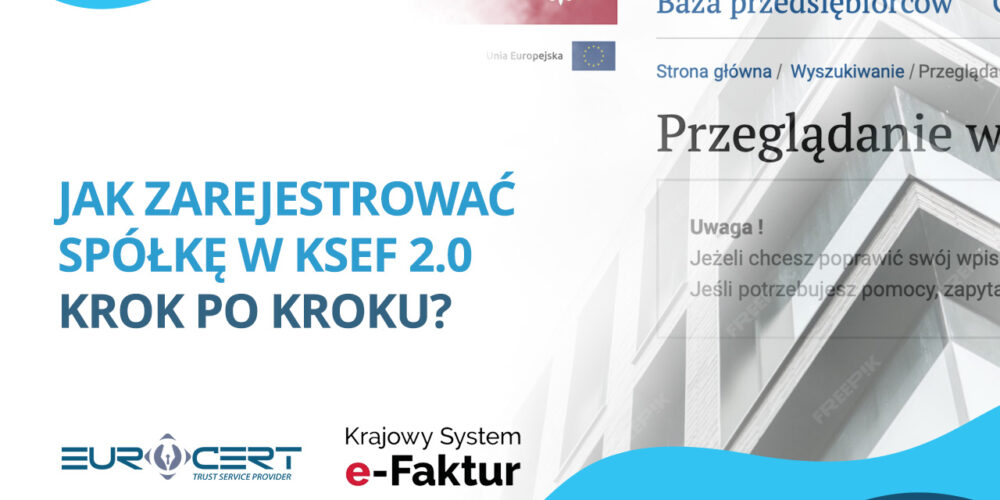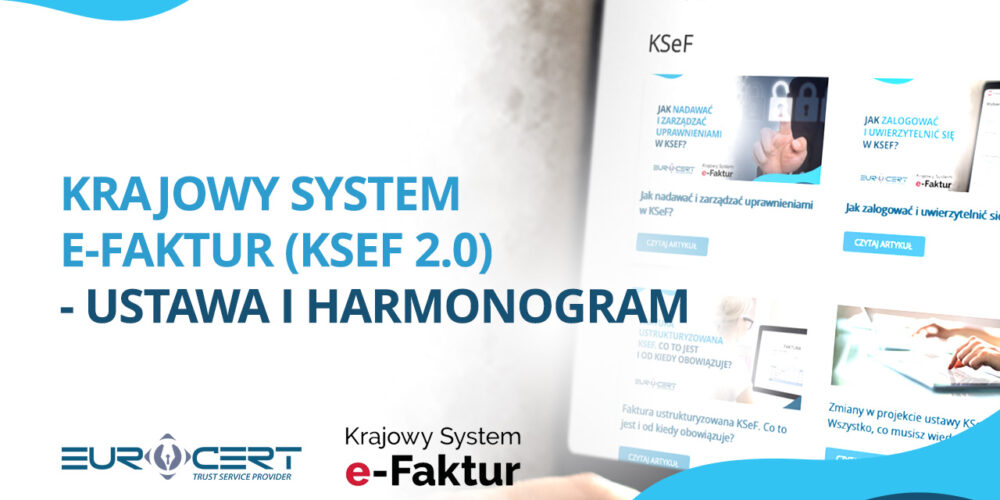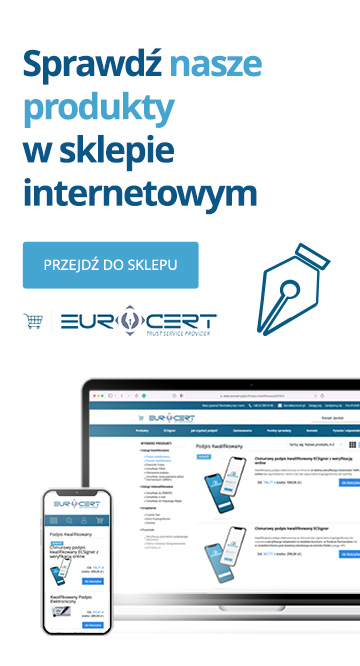Nowy system rejestracji faktur elektronicznych (KSeF) ma na celu usprawnienie cyfrowego obiegu dokumentów. W zamyśle Ministerstwa Finansów rozwiązanie automatyzuje kluczowe procesy w firmach. Korzystanie z KSeF będzie obowiązkowe dla przedsiębiorców w 2026 roku, dlatego warto zainteresować się tym tematem jak najszybciej. Jak uwierzytelnić się w KSeF? Jakie rozwiązanie wybrać do identyfikacji w systemie? Jakie korzyści płyną ze stosowania faktur ustrukturyzowanych? Odpowiedzi znajdziesz w tym artykule.
- Co to jest faktura ustrukturyzowana KSeF?
- Co zawiera faktura ustrukturyzowana KSeF?
- Czym różni się faktura ustrukturyzowana KSeF od tradycyjnej faktury?
- Faktura ustrukturyzowana KSeF – od kiedy obowiązkowa?
- Faktury ustrukturyzowane KSeF – korzyści dla podatników
- Faktura ustrukturyzowana KSeF, a podpis i pieczęć elektroniczna
- Czym jest Krajowy System e-Faktur?
- Faktura ustrukturyzowana KSeF – podsumowanie
Co to jest faktura ustrukturyzowana KSeF?
Elektroniczna faktura ustrukturyzowana w Krajowym Systemie e-Faktur (KSeF) to faktura, która potwierdza sprzedaż towarów lub usług i jest zapisana w formie pliku XML. Jest to dokument cyfrowy, zgodny z obowiązującymi przepisami, który zastępuje tradycyjną fakturę papierową. Oznacza to, że faktura ustrukturyzowana posiada jedynie postać elektroniczną i jest zgodna z narzuconym przez Ministerstwo Finansów logicznym wzorem.
Fakturę ustrukturyzowaną można wystawić w rządowej Aplikacji Podatnika albo poza aplikacją, zgodnie z przyjętym wzorem KSeF. Po wypełnieniu pól i podpisaniu dokumentu podpisem elektronicznym lub pieczęcią elektroniczną, faktura otrzymuje specjalny numer identyfikacyjny przydzielany przez system KSeF. W takiej postaci dostępna jest do pobrania przez kontrahenta. Do obsługi faktur można wykorzystać bezpłatne narzędzie dostarczane przez resort lub dowolny program komercyjny.
Art. 106na. Ustawy o podatku od towarów i usług. Faktura ustrukturyzowana jest uznana za otrzymaną przy użyciu Krajowego Systemu e-Faktur w dniu przydzielenia w tym systemie numeru identyfikującego tę fakturę.
Zarejestruj i uwierzytelnij firmę w KSeF 100% online
bez tracenia czasu w Urzędzie 💼
Co zawiera faktura ustrukturyzowana KSeF?
Ustrukturyzowana faktura elektroniczna zawiera pola, które podatnik wypełnia odpowiednimi danymi. Możemy wyróżnić ich 3 rodzaje:
- Pola obligatoryjne – wypełnienie tych pól jest obowiązkowe na mocy ustawy i dotyczy np. takich danych, jak NIP sprzedawcy, data wystawienia faktury, numer faktury,
- Pola opcjonalne – wypełnienie pól jest konieczne, tylko jeśli podatnik wypełni inne pola w konkretny sposób (np. zaznaczając opcję korzystania ze zwolnienia VAT, należy wskazać rodzaj tego zwolnienia),
- Pola fakultatywne – wypełnienie pól jest całkowicie dobrowolne i zależy od wystawcy faktury. Chodzi tu, np. o dodatkowy opis do faktury, czy miejsce jej wystawienia.
Warto dodać, że każda ustrukturyzowana faktura elektroniczna, wysyłana za pośrednictwem KSeF, zostaje opisana automatycznie nadanym numerem KSeF, który ułatwia jej identyfikację.
Wzór faktury ustrukturyzowanej jest dostępny w Centralnym Repozytorium Wzorów Dokumentów Elektronicznych (w skrócie: CRWDE) na platformie ePUAP.
Czym różni się faktura ustrukturyzowana KSeF od tradycyjnej faktury?
Faktura ustrukturyzowana jest fakturą cyfrową, która niesie za sobą szereg korzyści dla całego przedsiębiorstwa. Przede wszystkim umożliwia generowanie dokumentów w formacie XML do KSeF, zamiast w tradycyjnej formie. Wprowadzenie jednego standardu e-faktury przyspiesza wymianę danych pomiędzy firmami i digitalizację organizacji, a co za tym idzie, usprawnia obrót gospodarczy.
W przeciwieństwie do faktury tradycyjnej, e-faktura KSeF jest udostępniana w czasie rzeczywistym, co pozytywnie wpływa na automatyzację procesów księgowych. Ustrukturyzowane faktury elektroniczne są przechowywane w systemie przez 10 lat, licząc od końca roku, w którym zostały wystawione. Nie trzeba ich zatem dodatkowo archiwizować na firmowych serwerach czy w chmurze.
W porównaniu z tradycyjnymi dokumentami, warto też zwrócić uwagę na to, że faktury ustrukturyzowanej nie da się zgubić ani zniszczyć. Użytkownik KSeF zawsze ma pewność, że dotarła ona do klienta czy partnera biznesowego. Eliminuje to więc konieczność wystawiania duplikatów.
Faktura ustrukturyzowana KSeF – od kiedy obowiązkowa?
Polscy przedsiębiorcy mogą korzystać dobrowolnie z systemu KSeF od 1 stycznia 2022 roku. W okresie przejściowym mogą sami zdecydować, czy wystawiać faktury ustrukturyzowane w KSeF, czy nadal korzystać z formy papierowej lub elektronicznej tak, jak dotychczas.
Jakie podmioty mają obowiązek korzystania z KSeF? Terminy wejścia w życie obowiązkowego KSeF wyglądają następująco:
- od 1 lutego 2026 roku – dla podmiotów dużych (którzy w poprzednim roku przekroczyli 200 mln złotych obrotów),
- od 1 kwietnia 2026 roku – dla wszystkich podmiotów.
Faktury ustrukturyzowane KSeF – korzyści dla podatników
Od 1 lutego 2026 roku korzystanie z KSeF będzie obowiązkowe, dlatego warto zainteresować się tym systemem jak najwcześniej. Po pierwsze, dobrze jest przyzwyczaić personel do obsługi nowego narzędzia, zanim stanie się ono obligatoryjne. Po drugie, system oferuje liczne udogodnienia, które mogą usprawnić kluczowe procesy w organizacji.
Oto najważniejsze korzyści, jakie wiążą się z uruchomieniem elektronicznych faktur ustrukturyzowanych:
- ujednolicenie wzoru faktur i łatwość w ich porównywaniu,
- ułatwienie obiegu dokumentów w firmie,
- zwrot VAT w terminie 40 dni, a nie 60 dni,
- szybsze, automatyczne księgowanie, które przyspiesza pracę,
- mniej pomyłek w procesach księgowych,
- brak ryzyka zgubienia faktur i przeoczenia faktur wysyłanych e-mailem,
- mniej tradycyjnej dokumentacji i oszczędność papieru,
- większe możliwości zakupowe na terenie Unii Europejskiej.
Chcesz uzyskać więcej informacji o kwalifikowanej pieczęci elektronicznej w KSeF?
Zostaw dane kontaktowe i porozmawiaj z nami o Krajowym Rejestrze e-Faktur.
Faktura ustrukturyzowana KSeF, a podpis i pieczęć elektroniczna
Podpis elektroniczny wybierają głównie te osoby, które składają oświadczenie woli we własnym imieniu lub w imieniu podmiotu, który reprezentują. Kwalifikowana pieczęć elektroniczna zapewnia integralność dokumentów firmowych i określa ich pochodzenie. Jej najważniejszą zaletą jest to, że mogą z niej korzystać nie tylko osoby fizyczne, ale także osoby prawne, czyli firmy, organizacje i instytucje. W tym przypadku faktura ustrukturyzowana zostaje podpisana jedynie danymi przedsiębiorstwa, bez uwzględnienia imion i nazwisk osób reprezentujących.
Pełen potencjał tego rozwiązania widoczny staje się zwłaszcza w przypadku wykorzystania chmurowej kwalifikowanej pieczęci elektronicznej, która dedykowana jest podmiotom generującym wiele faktur, które przykładają szczególną wagę do kwestii bezpieczeństwa online.
Ten artykuł może Cię zainteresować:
Czym jest Krajowy System e-Faktur?
Krajowy System e-Faktur (KSeF) to oprogramowanie teleinformatyczne służące przedsiębiorcom do wystawiania i otrzymywania elektronicznych faktur ustrukturyzowanych, czyli takich, które mają wyłącznie postać cyfrową. W ramach systemu KSeF stworzono Aplikację Podatnika. Umożliwia ona wystawianie, odbieranie i przeglądanie e-faktur, a także zarządzanie uprawnieniami użytkowników.
Działania te stają się dostępne dopiero po wcześniejszej uwierzytelnieniu użytkownika, co gwarantuje autentyczność, integralność i bezpieczeństwo przesyłanych dokumentów. Identyfikacji można dokonać za pomocą:
- Profilu Zaufanego,
- tokenu KSeF,
- usług zaufania, tj. kwalifikowy podpis elektroniczny lub kwalifikowana pieczęć elektroniczna,
- zawiadomienia ZAW-FA, które składa się do urzędu skarbowego w przypadku braku PESEL i NIP w podpisie kwalifikowanym, wraz z unikalnymi danymi identyfikującymi (tzw. odcisk palca podpisu).
Ten artykuł może Cię zainteresować:
Aby w pełni korzystać z KSeF, warto posługiwać się wygodnym podpisem elektronicznym lub pieczęcią elektroniczną. Użycie jednego z tych narzędzi jest potrzebne już na samym początku, podczas identyfikacji (uwierzytelniania) użytkownika, która pozwala na zalogowanie się do systemu.
Uniwersalny, kwalifikowany podpis elektroniczny lub e-pieczęć przydają się podczas codziennej obsługi Aplikacji Podatnika, w której każde działanie wymaga osobnej identyfikacji. Chodzi tu m.in. o wystawianie faktury ustrukturyzowanej, czyli nowej formy faktury elektronicznej dla podatników, którzy prowadzą działalność na terenie RP.
Faktura ustrukturyzowana KSeF – podsumowanie
Krajowy System e-Faktur będzie obowiązkowy dla czynnych podatników VAT od 1 lutego 2026 roku. Od 1 stycznia 2022 roku Ministerstwo Finansów umożliwia korzystanie z systemu dobrowolnie, w tym wystawianie elektronicznych faktur ustrukturyzowanych. Przedsiębiorcy, którzy chcą odpowiednio przygotować się do obsługi KSeF i nowych regulacji prawnych, muszą posługiwać się podpisem elektronicznym lub pieczęcią elektroniczną, które pozwalają na identyfikację w Aplikacji Podatnika. Firma EuroCert dostarcza wiele narzędzi z zakresu usług kwalifikowanych, tj. e-pieczęcie i e-podpisy oraz ich rodzaje, które można w łatwy sposób dopasować do potrzeb małych, średnich lub dużych przedsiębiorstw.
Interesuje cię uzyskanie pieczęci elektronicznej lub e-podpisu? Już teraz skontaktuj się z ekspertami EuroCert, którzy pomogą w wyborze rozwiązania optymalnego pod kątem twoich potrzeb oraz odpowiemy na nurtujące Cię pytania.
